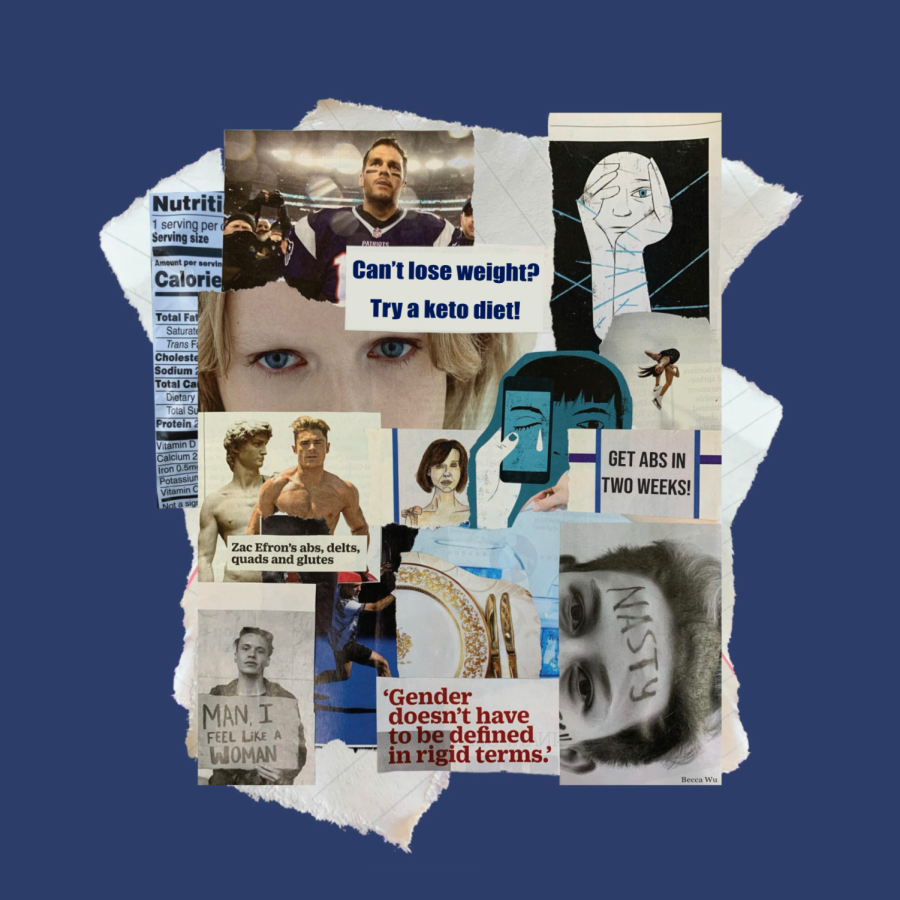Nonbinary students describe personal experiences with gender dysphoria, its effects on mental health
Gender dysphoria, different from body dysmorphia, is what the Gay, Lesbian and Straight Education Network (GLSEN) defines as “discomfort, pain and unhappiness that is experienced by many transgender people in relationship to the commonly gendered parts of their body.” Sophomore Jordan Minion, who is nonbinary, has faced challenges in accepting the physical and mental aspects of their gender identity.
For Minion, accepting their appearance was most challenging in middle school, when they were first discovering their identity. “When I was younger, I definitely experienced a lot of gender dysphoria,” Minion said. “At 11 or 12, I didn’t feel like a girl or a boy at all, but I didn’t even know what being nonbinary was or that it was even an option. I went back and forth between different pronouns, and I didn’t really know what was missing.”
However, Minion found both mental and physical reassurance upon realizing that they were nonbinary. “Having a label helps,” Minion said. “It kind of gives you that safety net of ‘this is who I am.’ Of course, it’s subjective—not everyone wants a label. But, it was really helpful for me to have an answer.”
As they grew more confident in their gender, Minion began to emphasize their internal identity over their outward appearance. “When I first [recognized myself as] nonbinary, it was a reflection of how I saw myself physically,” Minion said. “But as I found out more about my gender identity, it’s become more of a mental reflection. Now, even if I look feminine or masculine on any given day, I still feel the same way.”
Even so, Minion has faced obstacles in self-acceptance. For them, media messaging and expectations have placed harmful standards on nonbinary and transgender individuals. “There’s a lot of pressure to look how you feel, especially on TikTok and Instagram,” Minion said. “For example, if a trans man doesn’t cut his hair, go on testosterone, get surgery or wear a binder, they don’t fit into these societal expectations for what a man is. That’s very similar to being nonbinary. It’s just important to remember that you don’t owe anyone androgyny.” Androgyny is defined as possessing both masculine and feminine characteristics simultaneously.
Minion’s experiences were echoed by other nonbinary students in an anonymous poll from The Oracle. One student described their discomfort with societal expectations. “I would like to present myself as feminine or masculine sometimes, but society says I can’t if I’m nonbinary,” they said. “Plus, the standard for gender non-conforming people is skinny, white and perfectly gender neutral, which puts harmful restrictions on how we can present ourselves.” Ultimately, Minion believes that dysphoria has a primarily mental basis. “Honestly, I don’t think there’s a way to [mitigate dysphoria],” Minion said. “You can’t really fix the issues that you’re uncomfortable with—that’s usually a mental issue, not a physical one. It’s really just finding yourself.”
Your donation will support the student journalists of Henry M. Gunn High School. Your contribution will allow us to purchase equipment and cover our annual website hosting costs.


